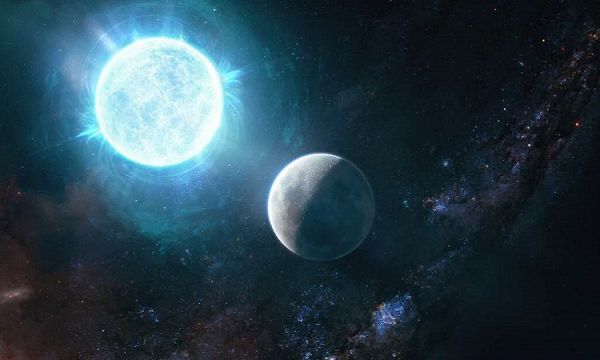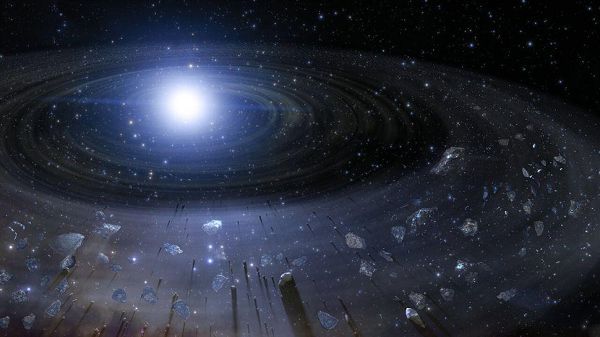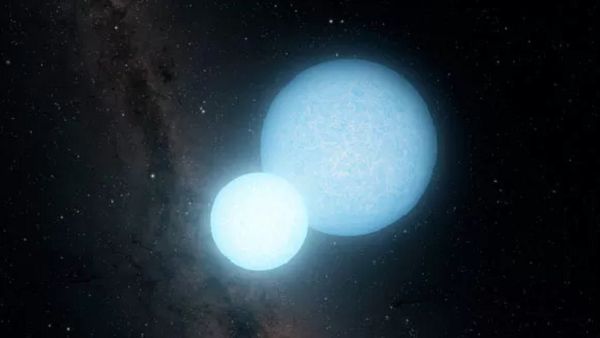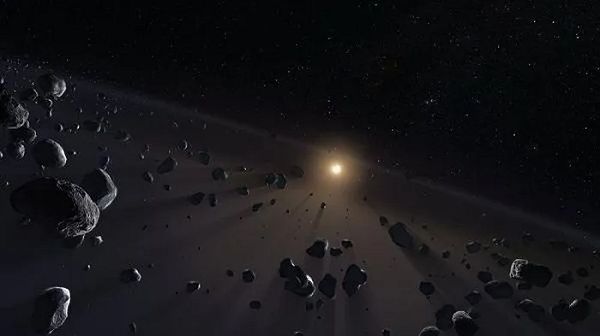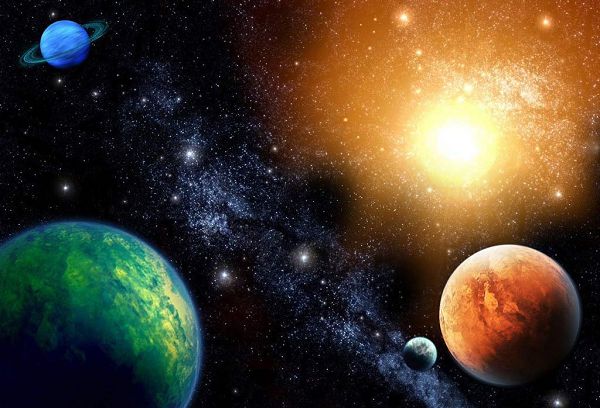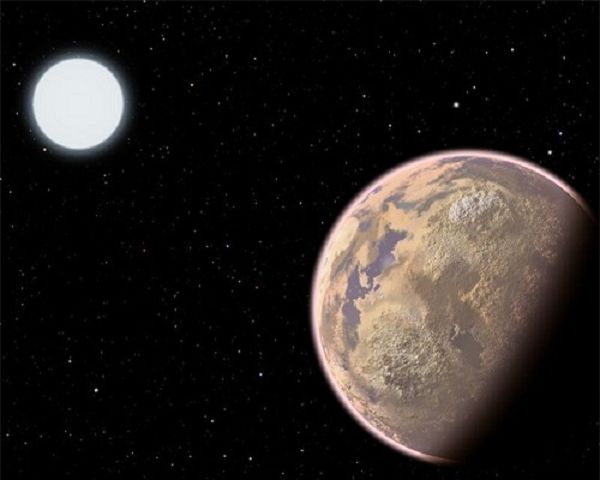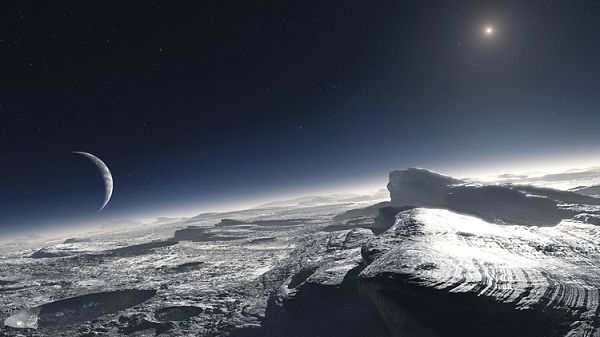“Discovery of a Mysterious Planet ‘Born from Cosmic Undead'”
A white dwarf star, believed to be dead, has given birth to a planet with properties that fall within the Goldilocks habitable zone of the star system.
When observing a white dwarf star called WD 1054-226, a research team led by Professor Jay Farhi from the University of London (UK) made some extremely notable discoveries.
Specifically, astronomers have detected distinct bright streaks corresponding to 65 evenly spaced planetesimal clouds orbiting the star every 25 hours.
These planetesimals, resembling moons in size and structure, are arranged in a ring formation. The uniformity of these structures suggests that they must be in a stable gravitational interaction between the central white dwarf star and a planet.
This planet is believed to be of similar size to the rocky planets in the Solar System. Although it cannot be observed directly, based on the positions of the planetesimal clouds, it is estimated that this shadowy planet is located at a distance of 2.5 million kilometers, equivalent to 1.7% of the distance between Earth and the Sun.
Furthermore, the characteristics of the central star also indicate that this planet must lie within the Goldilocks habitable zone of the star system.
Moreover, this is a recently born planet. The white dwarf star, which is essentially a cosmic “undead,” had previously “died” due to energy depletion.
Between the stage of the star “living” like the Sun and becoming a white dwarf, the star goes through a “red giant” phase, unexpectedly expanding and engulfing some nearby planets.
The newly discovered planet lies within the region that would have been consumed if it had existed prior to the red giant phase. Therefore, it must have formed after the star had become a white dwarf.
This is not the first time scientists have observed the phenomenon of a seemingly dead white dwarf star giving birth to a planet.
The research team used the ULTRACAM instrument on the 3.5-meter New Technology Telescope at the European Southern Observatory’s La Silla Observatory in Chile, as well as NASA’s Transiting Exoplanet Survey Satellite (TESS), to observe this white dwarf star.
White dwarf stars are celestial objects formed when low- to medium-mass stars “die” (consume all the nuclear fuel in their cores). These stars are not massive enough to generate the core temperatures required to fuse carbon in nuclear reactions after they transition into red giant stars.
At the end of this stage, the outer half of the swollen star is ejected into space, forming a planetary nebula, leaving behind a dormant core consisting mainly of carbon and oxygen, which is the white dwarf.
Hits: 0


